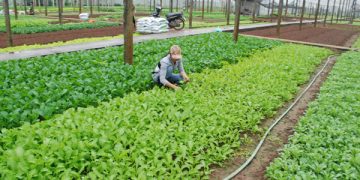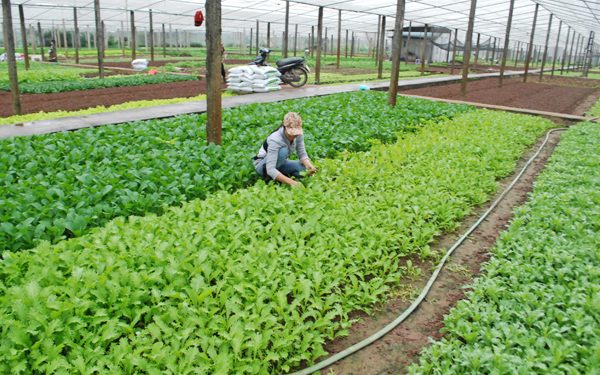Delve into the ambitious target set by Vietnam’s agricultural sector to achieve vegetable exports worth $1.5 billion by 2030. Uncover the intricacies of this goal, the strategies in place, and the hurdles faced in realizing this vision.
In November 9, 2023, the Ministry of Agriculture and Rural Development issued Decision No. 4765/QD-BNN-TT approving the Safe Vegetable Production Development Project, focusing on supply chain integration, processing, and market accessibility until 2030. The project sets forth specific objectives: achieving a national vegetable output of 23-24 million tons by 2030, with over 95% of samples meeting safety standards, and approximately 30% of the total vegetable cultivation area dedicated to safe, concentrated production.
Despite the potential, Vietnam’s vegetable production remains fragmented and lacks sustainability, posing challenges to reaching the $1 billion export target. With aspirations to expand production areas to 1.2-1.3 million hectares by 2030, including a focus on staple vegetables like cabbage, watermelon, cucumber, onion, garlic, and chili, achieving sustainable growth proves daunting.
Challenges in Sustainable Production
The core challenge lies not in finding export markets but in meeting their quality and quantity demands. Small-scale farming dominates Vietnam’s agricultural landscape, making it difficult to consolidate large quantities of uniform produce. In provinces like Bac Giang and Lang Giang, efforts to establish concentrated vegetable production areas face hurdles due to scattered land ownership and insufficient infrastructure, particularly in storage facilities and cold chain logistics.
Addressing Regulatory and Quality Concerns
Regulatory compliance and quality assurance emerge as critical concerns. Instances of mislabeling and improper use of region codes tarnish Vietnam’s export reputation. Efforts by the Plant Protection Department to establish a comprehensive database and coordinate stringent inspections at border checkpoints are underway. However, broader cooperation among local authorities, industry stakeholders, and associations is imperative to effectively manage region codes.
According to Associate Professor Dr. Nguyen Xuan Hong, Vice President of the Vietnam Gardening Association, Vietnam faces increasing scrutiny from importing nations regarding phytosanitary compliance and pesticide residue levels in agricultural produce. Stringent inspection regimes and demands for tighter oversight of inspection entities underscore the urgency for Vietnam to fortify its agricultural regulatory framework.
As Vietnam charts its course towards a $1.5 billion vegetable export industry, addressing fragmentation, enhancing infrastructure, and ensuring regulatory compliance emerge as pivotal tasks. The journey towards sustainable, high-value vegetable production demands concerted efforts from all stakeholders, safeguarding Vietnam’s position in the global agricultural market.
































